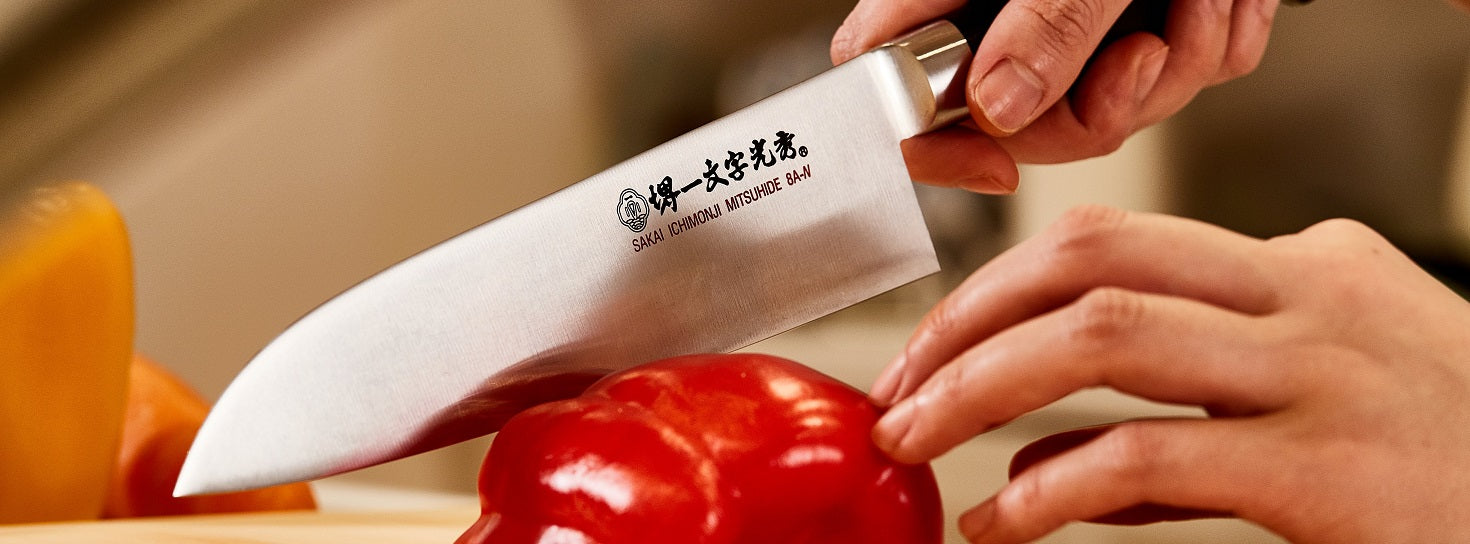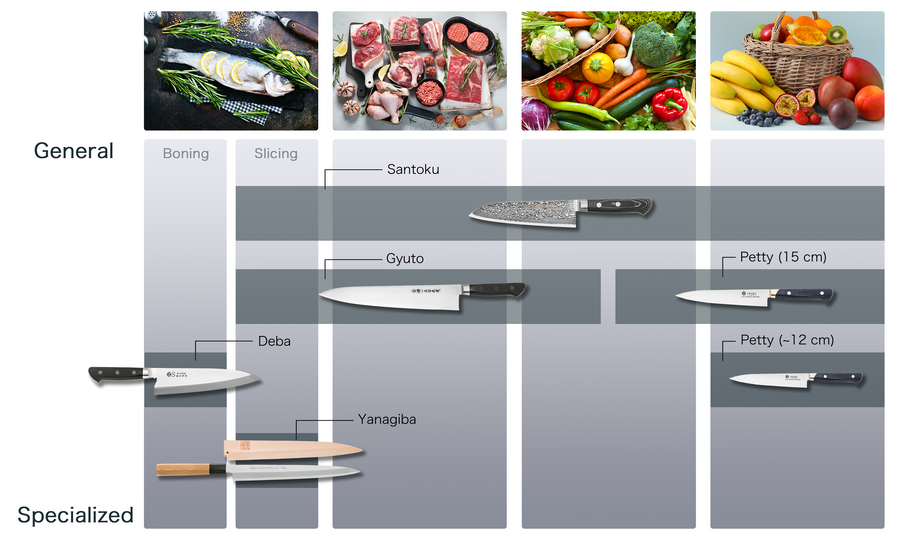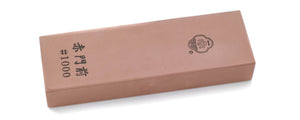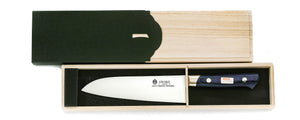Santoku Knives: Japanese All-Purpose Knives

The santoku is the most commonly used multi-purpose knife in Japanese homes, and we've been making and selling them at Sakai Ichimonji Mitsuhide for decades. An evolution of the bunka knife, see what the best home cooking experience is about by getting one ordered right to your door!
What is a Santoku Knife?
A Santoku knife is an incredibly versatile Japanese kitchen knife, designed as an all-rounder for use in Japanese homes. The word Santoku roughly means “three virtues", since you can use it to cut meat, fish, and vegetables. As meat became a more common ingredient in Japanese households, the classic Nakiri, Usuba, and Deba knives fell out of favor with home cooks. This led to the Santoku becoming the king of the kitchen and often the first knife someone would buy for their home.
The Size of a Santoku Knife
Most Santoku knives have a blade length of 165-175mm, which is the ideal size for slicing through a head of cabbage, while still being small enough to cut fruit and smaller vegetables or meat parts with ease.
As small apartments and single living increased in Japan over the last 30 years, 150mm Santoku have become extremely popular too.
How to Choose a Santoku Knife
Carbon Steel or Stainless Steel?
Carbon Steel is easy to sharpen, holds the best edge and cuts with ease. This steel is susceptible to rust though, so it requires more maintenance and care.
Stainless Steel is rust resistant and easier to maintain, but cannot match Carbon Steel's sharpness despite recent improvements. Stainless Steel Knives are also more difficult to sharpen than Carbon Steel, requiring more patience and a steady hand.
Price: Why are the prices so different between kitchen knives?
The quality and type of steel, the heat treating process and the quality of the sharpening and polish on the knife blade can influence the price. In other words, the more work and labor hours involved in producing the knife, the higher the cost. It will usually also mean the sharpness will last longer and the knife itself is more pleasing to the eye.
Recommended Stainless Steel Knives -Our Popular Series-
For people who prioritize ease of sharpening.
The blade of the 8A-N Series is made from AUS-8, one of the popular stainless steels for Japanese Knives. It is easy to sharpen and slightly tougher than other stainless steels so it is less likely to chip during use. The sharp cutting ability and edge retention of our 8A-N Series is also improved by quenching. As it's low-maintenance, this is a good choice for newcomers to Japanese Knives.
For people who prioritize long-edge retention.
The blade of the G-LINE Series is made from VG-1, a steel made from purified materials with high-skilled steelmaking technology. This leads to high hardness, sharpness and long edge retention. As it has a long sharpness life, it is recommended for long time cooks and those who do not want to sharpen so often.
For people who want "no compromises". It is easy to sharpen and has excellent edge retention.
The blade of the FV10 Series is made from VG-10, an evolution of VG-1. VG-10 offers much easier sharpening compared to the VG-1 series. Furthermore, our FV10 is manufactured by a unique tempering process. This keeps high hardness and sharpness levels, with long edge retention while also making it easy to sharpen. As a result, it leads to the best balance that stainless steel knives can have.

How to Choose a Japanese Kitchen Knife for Beginners
Japanese kitchen knives are famous for their design, history, and cutting performance. This guide will help you select the best knife for your needs.
































